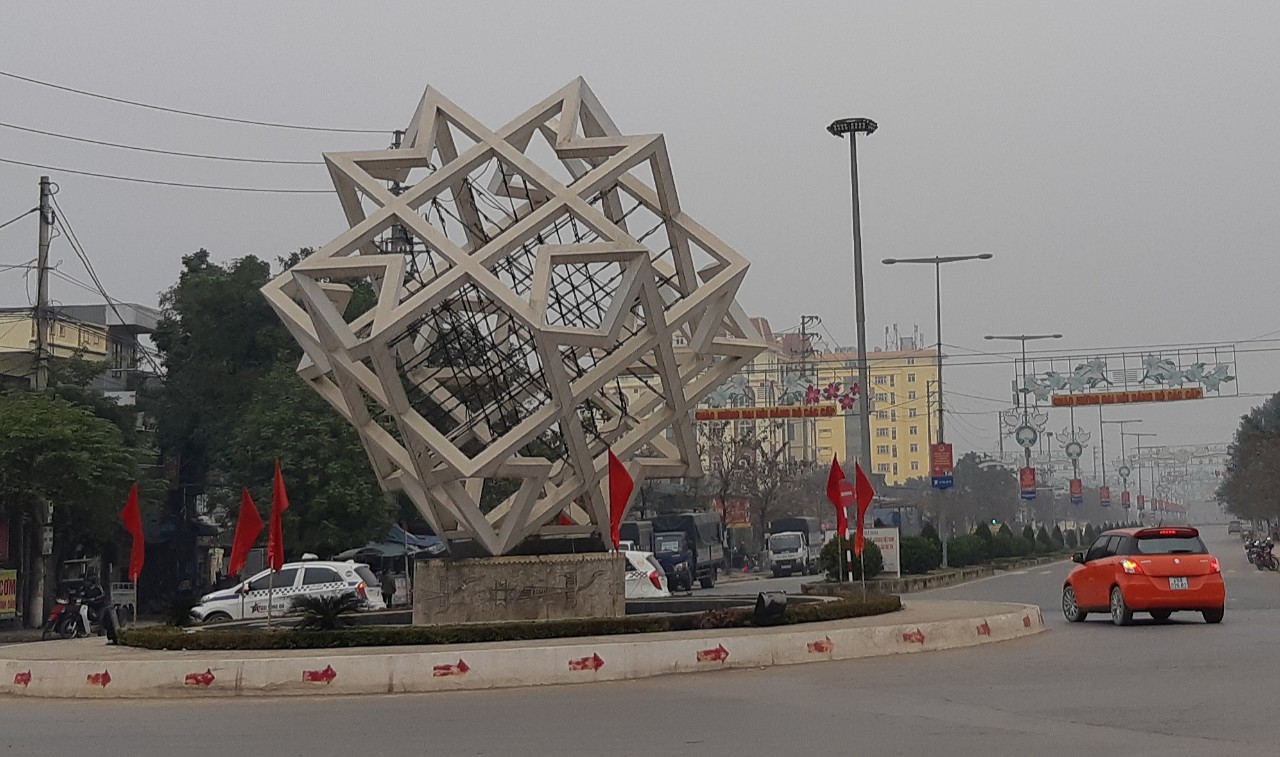(HBO) – Hoa Binh city, a third-tier city subordinate to Hoa Binh province, was set up under the Government’s Decree 126/2006/ND-CP, issued on October 27, 2006. 2020 was a special milestone when the whole Ky Son district was merged into Hoa Binh city, giving it more growth momentum. Not only that the city now has a new look with its area reaching 348.65 sq.km., a population of over 135,000, and a Party organisation with more than 11,000 Party members, but its residents are also confident that the city deserves its status as the centre of Hoa Binh province.
 Hoa Binh city has mobilised resources for developing uniform
infrastructure so as to meet criteria for a second-tier city.
Hoa Binh city has mobilised resources for developing uniform
infrastructure so as to meet criteria for a second-tier city.
The Party organisation of Hoa Binh city
successfully realised the targets set in the resolution of the municipal Party
Congress for the 2015 - 2020 tenure.
During the period, about 1.8 trillion VND (78.6
million USD) from the State budget was spent on developing socio-economic
infrastructure, up 9 percent from the previous tenure. A number of projects
have been completed and put into use, including the first phase of Hoa Lac -
Hoa Binh city Road, Hoa Binh 3 Bridge, Hoa Binh Square, and the Shophouse
Vincom project.
The city now boasts relatively uniform and
high-quality social infrastructure and technical facilities. The system of markets,
supermarkets, and shopping centres has met local people’s demand; the water
supply, water drainage, and lighting systems have been upgraded; while the
healthcare network has been expanded with two provincial-level hospitals, one
medical centre, and tens of non-State healthcare establishments. Thanks to
stronger investment, Hoa Binh city is currently home to 68 kindergartens and
primary and junior high schools, along with 199 cultural centres of hamlets.
Despites numerous difficulties in 2020, the city
managed to obtain the twin targets of containing COVID-19 and sustaining
socio-economic development. It also accomplished and surpassed all the 19
targets set in the resolution of its Party Committee, including 597 billion VND
collected for the State budget, the urbanisation rate reaching 76 percent, and
the household poverty rate brought down to 1.28 percent.
2020 was also a special year of Hoa Binh city as
it did a good job in site clearance for 79 projects and made breakthroughs in
administrative reforms, particularly in terms of business climate improvement.
The city moved up to the first place in the e-administration rankings. The
number of administrative procedures handled via level-3 and level-4 online
public services has reached 29.3 percent, helping it secure the first position
among district-level localities in this regard.
Basing on those important prerequisites, Hoa Binh
city launched an action plan for implementing the resolution of its second
Party congress for the 2020 - 2025 tenure. This action plan features six
concrete programmes each of which identifies detailed targets, tasks, and
solutions.
On January 12, the National Assembly’s Steering
Committee issued Resolution No 1189/NQ-UBTVQH14 on the establishment of Quynh
Lam and Trung Minh wards in Hoa Binh city, which also looks to set up Mong Hoa
ward in 2023.
Following the municipal Party Congress, the
People’s Committee of Hoa Binh city has issued the socio-economic development
and medium-term public investment plans for 2021 - 2025.
Secretary of the municipal Party Committee Ngo
Ngoc Duc said to realise the set targets, the committee has ordered local Party
cells and organisations to disseminate and carry out the congress’s resolution
and the action plan while clarifying responsibilities of each agency and unit.
In particular, apart from enhancing the
awareness of Hoa Binh city’s status as the province’s political,
administrative, economic, cultural, and social centre, they also need to bring
into play the city’s position in the development planning of the Hanoi Capital
Region, as well as its role as the centre of the northwestern region and a
bridge linking the Capital Region with northwestern localities, he added./.



 Hoa Binh city has mobilised resources for developing uniform
infrastructure so as to meet criteria for a second-tier city.
Hoa Binh city has mobilised resources for developing uniform
infrastructure so as to meet criteria for a second-tier city.